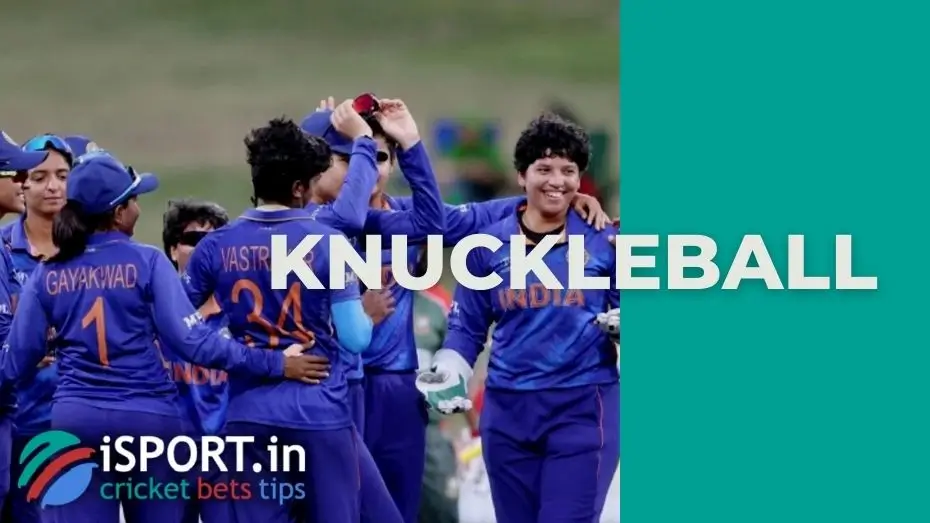Knuckleball

Knuckleball is a special type of serve in cricket, used mainly by fast bowlers and is a kind of “slow ball” (Wandi ball). The main goal of the attacking player who uses this serve is to deceive the batsman, forcing him to come into play earlier than planned. As a result, the latter either misses the ball or sends it high into the air, making it easier for the field players to intercept.
The peculiarity of the Knuckleball is that the bowler does not use the traditional grip with the fingers but only the knuckles of the index and middle fingers. The batsman’s starting position does not show the difference, so he prepares to receive the ball as if the bowler were using a standard grip. However, the Knuckleball slows down the projectile, so the batsman will inevitably make a mistake if this serve is done properly.
Knuckleball is not a specific cricket phenomenon. The pitch was borrowed from baseball, where it has been successfully used since the beginning of the twentieth century. Its inventor has not yet been established – according to some versions, it could have been Toad Ramsey (Louisville Colonels), Eddie Cicotte (Chicago White Sox) or Charles Drury (Blue Ridge League), who in turn taught this serve to Eddie Rommel.
Interestingly, the original Knuckleball was performed with only two fingers (index and middle). Subsequently, Ed Summers proposed an adaptation of the serve, that also involved the thumb holding the ball from below. Some players went even further, holding the projectile with the tips of their nails before the serve.
The key effect of the Knuckleball – namely, the unpredictable trajectory of the ball plus a relatively low speed (no more than 113 km / h) – is achieved by the transition from laminar to turbulent flow. The curved seam of the baseball allows for additional reinforcement, which makes the batter’s task much more difficult and often confuses the referees. At the same time, despite the illusion of chaotic “fluttering”, in reality, with the Knuckleball, the ball makes from a quarter to a half of its usual turn, so the attacker does not even need to give it an additional spin.
Knuckleball is not in vain considered one of the most difficult serves: in baseball, there is even a popular saying “If it’s low, let it go, if it’s high, let it fly” (“If the ball goes low, let it fly, if high – let it fly”). Simply put, a batter has a chance to deflect the Knuckleball only if the ball is at an acceptable height, where it can be easily reached. Otherwise, the serve can be safely attributed to non-bearers.
However, it should be borne in mind that there is a significant difference between the Knuckleball in baseball and cricket. The fact is that the seam of a cricket ball is of the “equatorial” type, which means its trajectory, in this case, is less chaotic due to the symmetry effect.
The Knuckleball in cricket has become a kind of response to the challenges of the limited-overs format. With its help, bowlers not only increase their own chances of taking a wicket but at the same time reduce the total number of opponent’s runs at the same time. This serve is harder to read than the standard serve and even harder to predict the rebound direction, so bowlers tend to use it in the last overs to confuse the opposing batsmen and prevent them from closing the lead.
The Knuckleball was first tested on cricket fields in the late 90s of the last century. However, on the international stage, it was first used only at the 2011 Cricket World Cup, when Zahir Khan surprised the audience with a new trick. Soon the Knuckleball was adopted by Khan’s colleagues from the Indian national team – Bhuvneshwar Kumar and Deepak Chahar. Australia’s Andrew Tai followed suit, using the Knuckleball so successfully in limited-overs that it earned him a permanent spot in the national team. A few years later, Jofra Archer from the West Indies, who perfectly mastered the Knuckleball, shone at the 2019 Cricket World Cup.
Interestingly: bowlers who actively use the Knuckleball argue that for the best effect, the ball should be directed as close to the wicket stakes as possible to force the batsman to come forward early.
